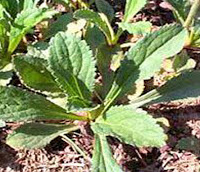 Picrorhiza Kurroa is a small plant that grows in the North-Western Himalayan region of India and Nepal. Between June and August white or pale purple flowers bloom on the plant, but it is the plant’s root that is mainly used for medicinal purposes.
Picrorhiza Kurroa is a small plant that grows in the North-Western Himalayan region of India and Nepal. Between June and August white or pale purple flowers bloom on the plant, but it is the plant’s root that is mainly used for medicinal purposes.
The active ingredients of picrorhiza protect the liver on many levels and have been extensively studied by researchers.1
It has also been found useful in stimulating the immune system and as an anti-inflammatory.
Uses
Stimulates Liver Cells to Regenerate
Picrorhiza kurroa has been shown to stimulate the regeneration of hepatocytes, possibly by stimulating the synthesis of nucleic acids and proteins.2
Protects the Liver
The active ingredient kutkin has demonstrated hepatoprotective effects3 and stong anticholestatic activity against a variety of liver-toxic substances.4 It can increase the amount of bile salts, acids and flow.
Prevents Liver Toxicity
Numerous animal studies have shown that the active ingredients are effective at preventing liver toxicity from numerous toxins.5, 6, 7, 8
Restores Glutathione Levels
Picrorhiza can restore depleted glutathione levels which then enhances detoxification and, of course, antioxidation.9
Useful in Treating Hepatitis, Cirrhosis, and Fatty Liver. Picrorhiza kurroa has been shown to have clinical applications in the treatment of viral and toxic hepatitis, fatty liver, cirrhosis, ischemic injury, and radiation toxicity due to its antioxidative, anti-lipid peroxidative, immunomodulating, and liver regenerating effects.10
Pharmacodynamics
Kutkin is the principal active ingredient in picrorhiza kurroa, but the root also contains apocynin, drosin, and nine cucurbitacin glycosides.
The mechanism of action of kutkin that results in the regeneration of hepatocytes may be due to the molecule stimulating nucloeolar polymerase A, which results in protein synthesis in the ribosomes and hepatocyte generation.
Its hepatoprotective effects may come from its ability to alter the structure of the hepatocyte’s outer membrane, so that toxins cannot penetrate into the interior of the cell.
References
- Medicine Review 1998; Volume 3, Number 6.
- Singh V, Kapoor NK, Dhawan BN. Effect of picroliv on protein and nucleic acid synthesis. Indian J Exp Biol 1992; 30:68-69.
- Ansari R, Aswal B, Chandler R, Dhawan B, Garg N, Kapoor N, Kulshreshtah D, Mehdi H, Mehrotra B, Patnaik G, Sharma S; Hepatoprotective Activity of kutkin- the iridoid.glycoside mixture of picrorhiza kurroa. Indian J Med Res 87. (1988) 401.
- Shukla B, Visen PK, Patnaik GK, et al. Choleretic effect of picroliv, the hepatoprotective principle of Picrorhiza kurroa. Planta Med 1991;57:29-33.
- Visen PK, Saraswat B, Dhawan BN. Curative effect of picroliv on primary cultured rat hepatocytes against different hepatotoxins: an in vitro study. J Pharmacol Toxicol Methods 1998;40:173-179.
- Rastogi R, Srivastava AK, Rastogi AK. Biochemical changes induced in liver and serum aflatoxin B1-treated male wistar rats: preventive effect of picroliv. Pharmacol Toxicol 2001;88:53-58.
- Saraswat B, Visen PK, Patnaik GK, Dhawan BN. Ex vivo and in vivo investigations of picroliv from Picrorhiza kurroa in an alcohol intoxication model in rats. J Ethnopharmacol 1999;66:263-269.
- Singh AK, Mani H, Seth P. Picroliv preconditioning protects the rat liver against ischemia-reperfusion injury. Eur J Pharmacol 2000;395:229-239.
- Chander R, Kapoor NK, Dhawan BN. Effect of picroliv on glutathione metabolism in liver and brain of Mastomys natalensis infected with Plasmodium berghei. Indian J Exp Biol 1992;30:711-714.
- Altern Med Rev. 1998;3(6):410-421.
photo credit: Dr. Garima Sancheti
